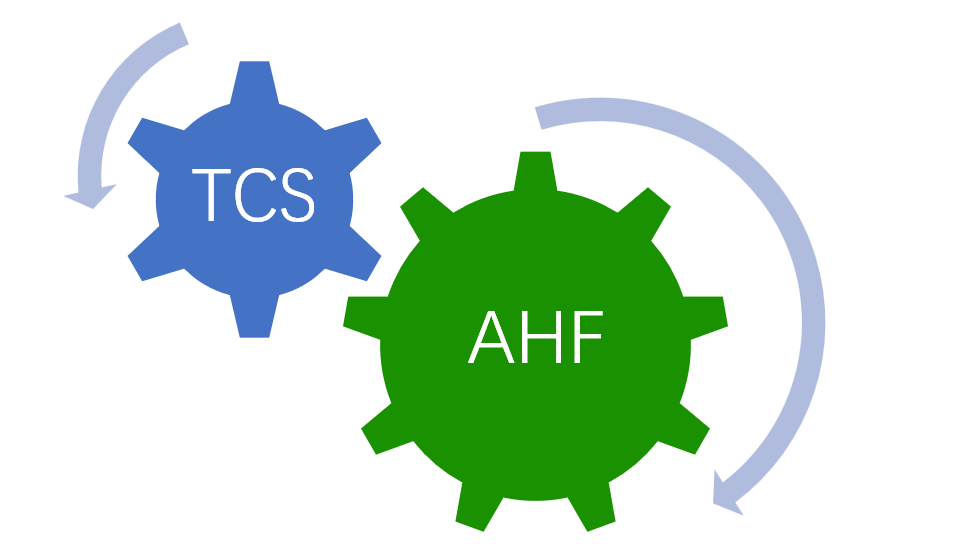Enjoypowers Hybrid var Compensation can make full use of the advantages of fast and accurate compensation of active harmonic filter AHF/static var generator SVG and low cost of TSC. This article describes what problems exist with TCS, and how AHF addresses them.
Table of Contents
Introduction
With the rapid development of power electronics technology, many nonlinear loads lead to more and more power quality problems in the power grid, especially in industrial occasions that use many high-power inverters, rectifiers, and other equipment.
Nonlinear loads will generate a lot of harmonics and reduce the power factor so that the utilization rate of the transformer will decrease, and the cost of electricity will be increased. And harmonics will shorten the life of precision equipment.
Passive reactive power compensation solution in power quality
The thyristor switched capacitor (TSC) composed of capacitors, reactors, thyristors, and controllers are widely used. Compared with the traditional reactive power compensation capacitor switching method, although the TSC system has greatly improved the compensation effect and system stability, the following problems still exist:
1. If there is a large harmonic current in the power grid, the reactive power generated by the harmonic cannot be solved by TSC.
2. The system composed of capacitors and reactors controlled by thyristors is greatly affected by the harmonic voltage of the system. Although it can compensate for the inductive reactive power of electrical equipment, it will generate many harmonics.
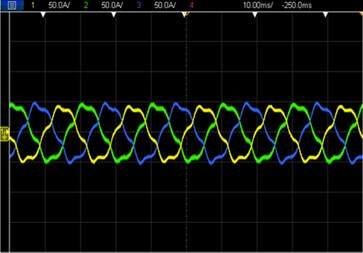
Figure 1 shows the output three-phase current after compensation of the TSC system. Although increasing the reactance can reduce harmonics, increasing the reactance will weaken the effect of reactive power compensation. The existence of harmonics will also affect the service life of the capacitor.
3. Based on cost considerations, most TSC manufacturers on the market currently use Delta capacitors. In situations where the three-phase load is unbalanced, or in the stage of load fluctuation, over-compensation and under-compensation often occur.
Hybrid var compensation solution
The hybrid compensation solution composed of AHF/SVG and TSC can solve the problems existing in TSC reactive power compensation at a low cost.
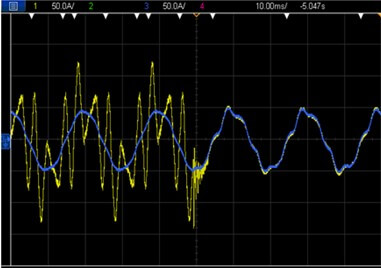
Figure 2 shows the comparison of the current waveforms before and after the harmonic compensation is turned off, in which yellow is the total output current waveform of the system, and blue is the TSC output current waveform.
It can be seen that without compensating for harmonics, simply relying on passive equipment for reactive power compensation will increase the harmonics of the power grid.
There are two main ways to control the hybrid compensation system on the market: one adopts centralized monitoring and control, and the other adopts a reactive power controller to control TSC alone.
Whether it is centralized monitoring or a reactive power controller, the output signal is mostly driven by relay control. The relay itself has a large delay, and the delay is discrete, resulting in unpredictable turn-on and turn-off times of the thyristor it controls.
The waveform that triggers the conduction of the thyristor at the zero-crossing of the grid voltage is shown in Figure 3:

The waveform that triggers the conduction of the thyristor at the peak of the grid voltage is shown in Figure 4:

Compared with Figure 3, if the thyristor is controlled to turn on when the voltage value is the highest, Figure 4 will cause a large inrush current on the reactive power compensation capacitor. The large inrush current will not only damage the capacitor but also have an impact on the grid voltage. Affect the stability of electrical equipment.
Figures 5 to 7 are the simulation waveforms of thyristor turn-off:
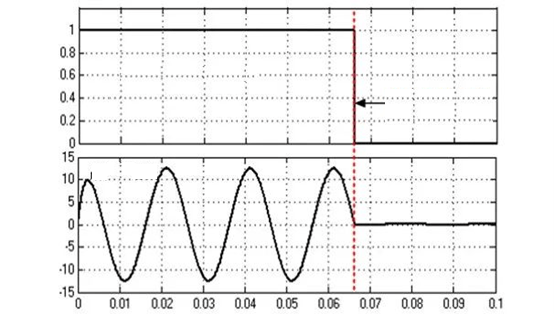
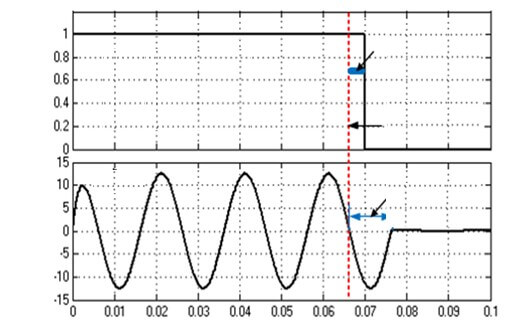

If the thyristor is turned off at the red line, there will be a large delay in the drive, and the thyristor will be turned off at 10ms in Figure 6 and when the delay is close to 20ms in Figure 7. The delay of general relays on the market is more than 4ms, which has a great impact on the response speed of TSC, resulting in a compensation dead zone in the hybrid compensation system, which greatly affects the compensation effect.
Introduction to Hybrid var Compensation
The feature of Enjoypowers hybrid compensation is that the reactive power compensation is directly controlled by the TSC through the active power filter, without the need for additional reactive power compensation controllers.

As shown in Figure 8: The hybrid compensation device is connected to the power grid in parallel, and the thyristor is directly controlled through the output dry contact of the AFP. The output dry contact is isolated by an optocoupler, which can precisely control the on and off time of the thyristor. According to the real-time sampling of CT to obtain the load current, the AHF/SVGcontroller further extracts the reactive power and harmonic components that need to be compensated for each phase, and the controller realizes the compensation of reactive power and harmonics by controlling the thyristor driving and PWM driving signals. The reactive power of the system is roughly compensated by the TSC, and the reactive power and harmonics are fine-tuned by the AHF/SVG. After the AHF/SVGfault is removed, the TSC can continue to work with high reliability.
Enjoypowers Hybrid var Compensation Advantage
- Make full use of the advantages of fast and accurate compensation of AHF/SVG and low cost of TSC
- High compensation accuracy to avoid over-compensation and under-compensation problems of TSC equipment
- AHF/SVGis driven by optocoupler isolation, and the response speed is less than 10ms
- TSC can achieve smooth switching and less impact on the grid
- TSC adopts intelligent polling control mechanism to improve the life of capacitors
- AHF/SVGmodule directly controls TSC switching without additional TSC controller
- TSC stepped switching, taking into account both dynamic and steady-state compensation effects
- A single AHF/SVGmodule can control up to 16 groups of TSCs
- Support multi-module parallel connection and redundant control
- CAN communication mode is adopted between modules, ring connection, high reliability
Enjoypowers is a top power quality manufacturer in China, providing OEM services for power quality products to more than 480 partners. Enjoypowers’ products have been successfully delivered in more than 20 countries。Enjoypowers Technology has a large number of power quality application cases around the world.
If you are selecting an active harmonic filter, you can contact us and let an active harmonic filter expert guide you through the selection and configuration.
For this, please send us your application data and contact me: [email protected], Or connect with me on LinkedIn.

